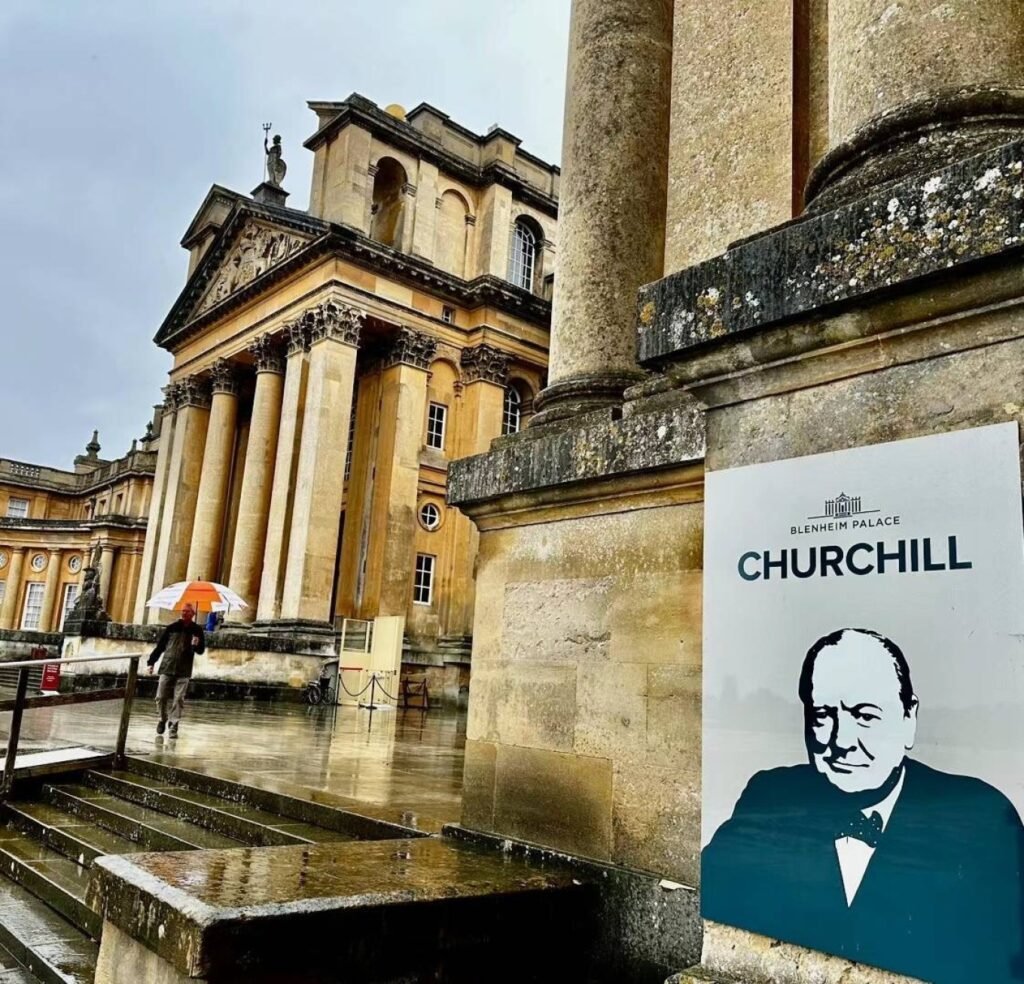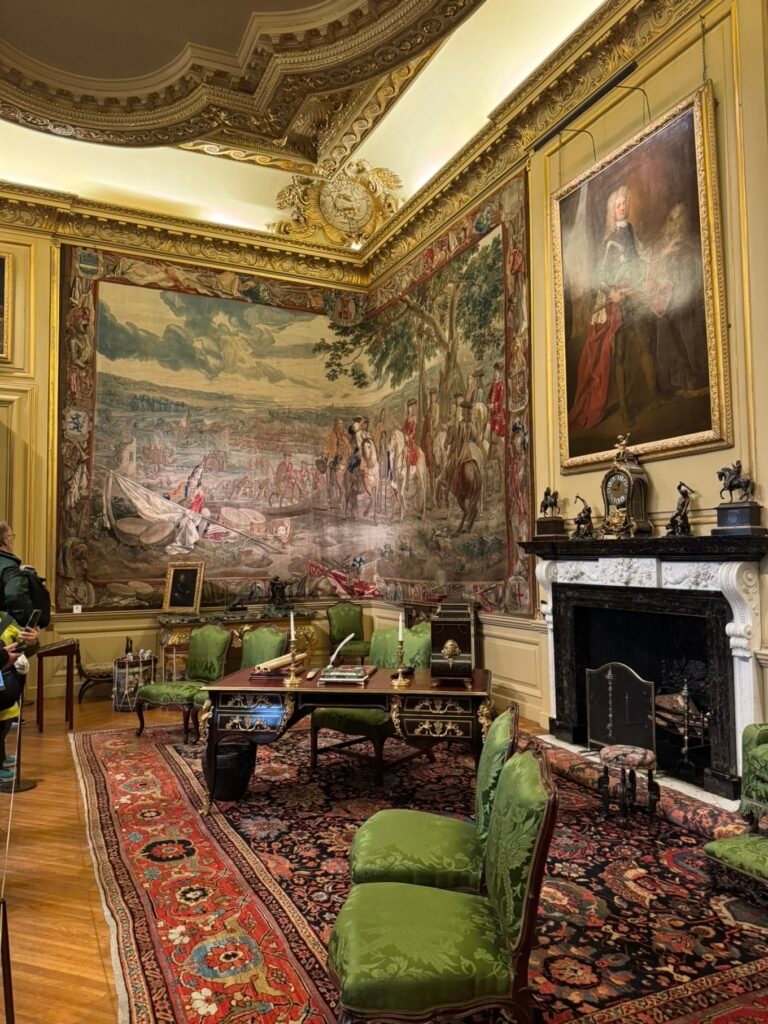The two most convenient ways to travel from London to Oxford are by train or by coach.
Arriving at the famous Paddington Station, located in the northwest part of central London, you’ll find it’s a major hub for many mainline services. Since 1838, it has been the terminus for the Great Western Railway in London. It’s also the western terminus for the Metropolitan Railway, the world’s oldest subway line. If your flight lands at Heathrow Airport, you can catch the Heathrow Express from here, which takes just 15 minutes.

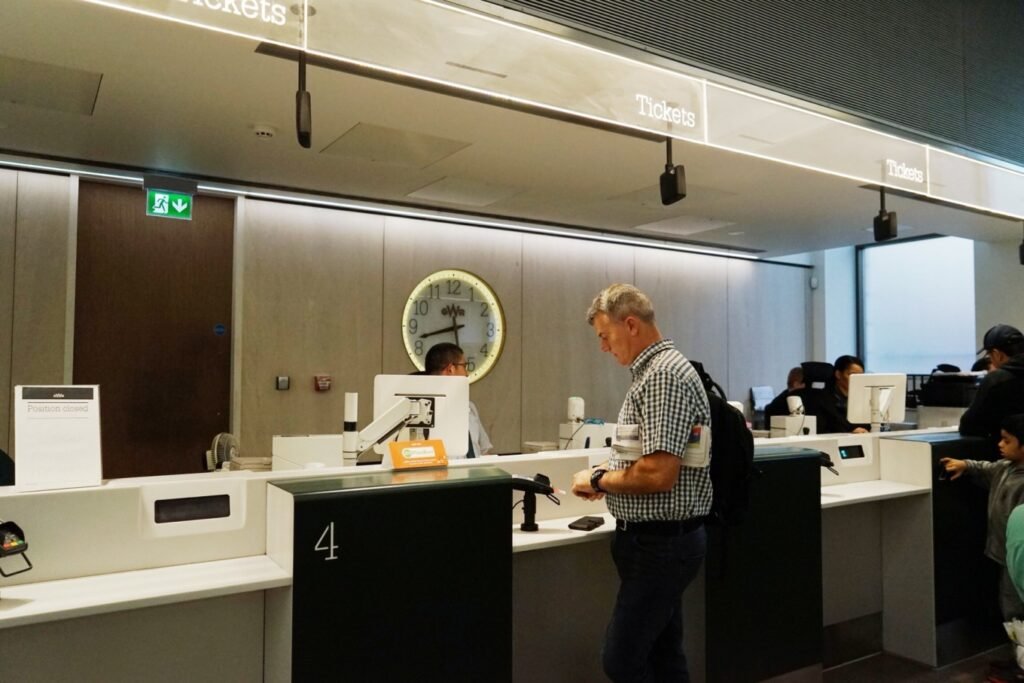
Above the GWR inquiry desk, there are many electronic displays. British trains aren’t always punctual, so keep a close watch on these screens to find your train’s platform number (you need this number to swipe your ticket and enter the platform). The screens show the departure time, platform number, intermediate stops, and some additional information from top to bottom.

Oxford, dating back to 912 AD, was already a key location in England. The term “Oxford” comes from “Oxenford,” meaning “ford of the oxen,” as ox-drawn carts used to cross the shallow waters where the Thames and Cherwell rivers meet.
The British see Oxford as a tradition, a symbol, a nostalgia, and a quest. It’s a place to reminisce about past glories and relive historical splendor. The city features landmarks like the Saxon Tower of St. Michael’s Church, Norman castle ruins, and remnants of city walls, all giving a deep sense of history. No wonder there’s an English saying: “Walking through Oxford is like stepping into history.” Along the Thames River, you can rent a flat-bottomed boat and enjoy a leisurely afternoon on the Cherwell River.
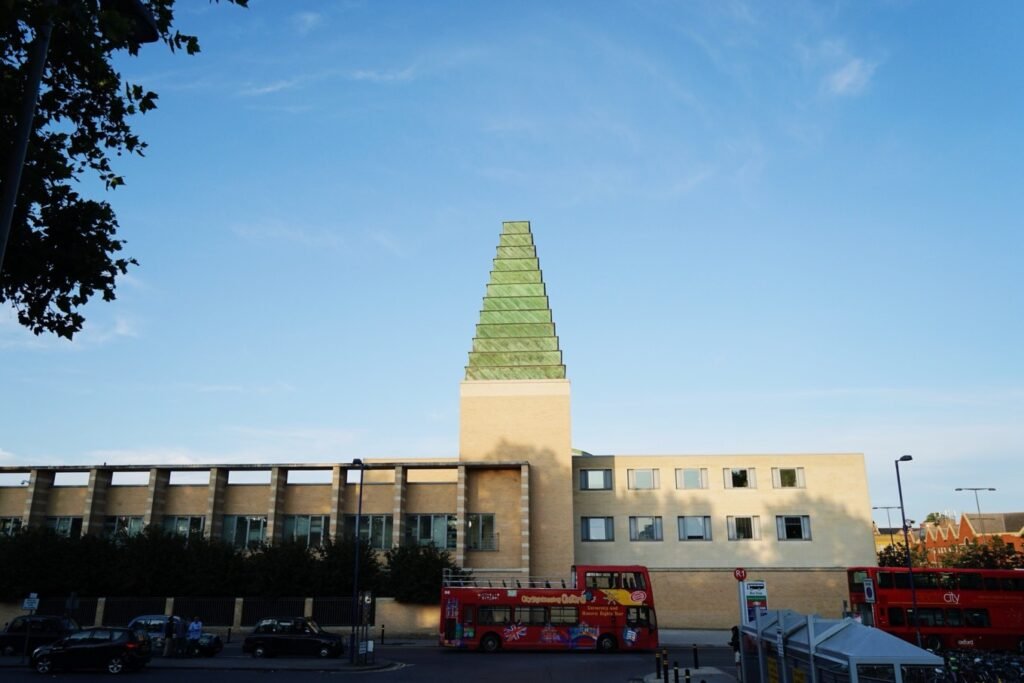
After exiting Oxford Station, many people will ask, “Where is Oxford University?”
Well, it’s right in front of you… That very design-forward green-roofed building is the Saïd Business School. Oxford University doesn’t have walls or gates; its 38 colleges and botanical gardens are scattered throughout the town of Oxford. You can either bring a map and choose which colleges you want to visit or wander aimlessly, letting Oxford University embrace you. The map might just help you know where you are.
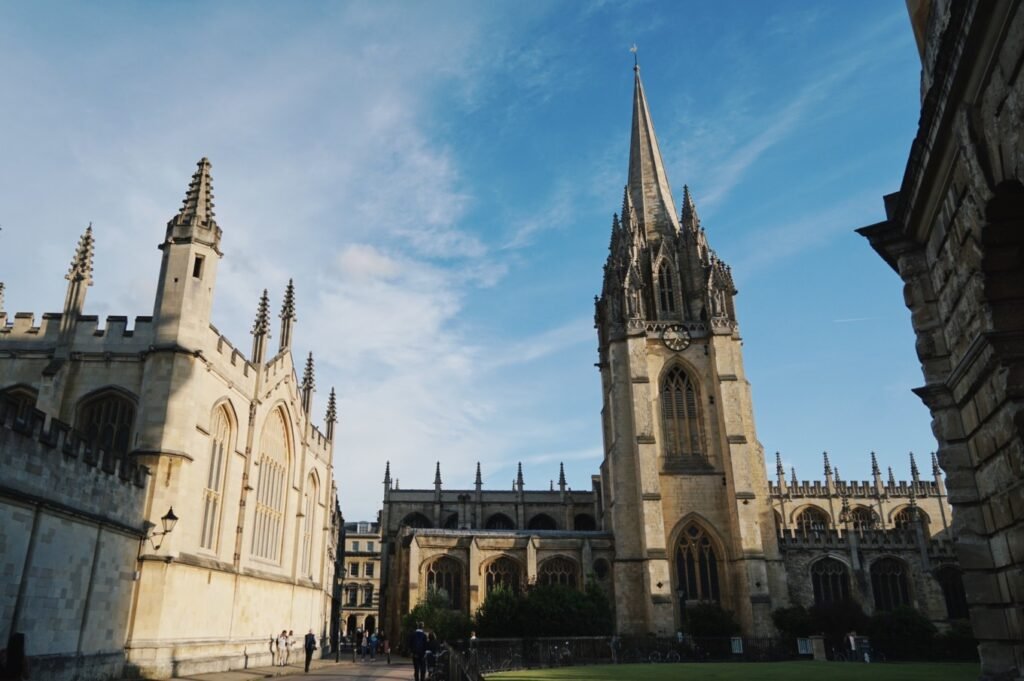
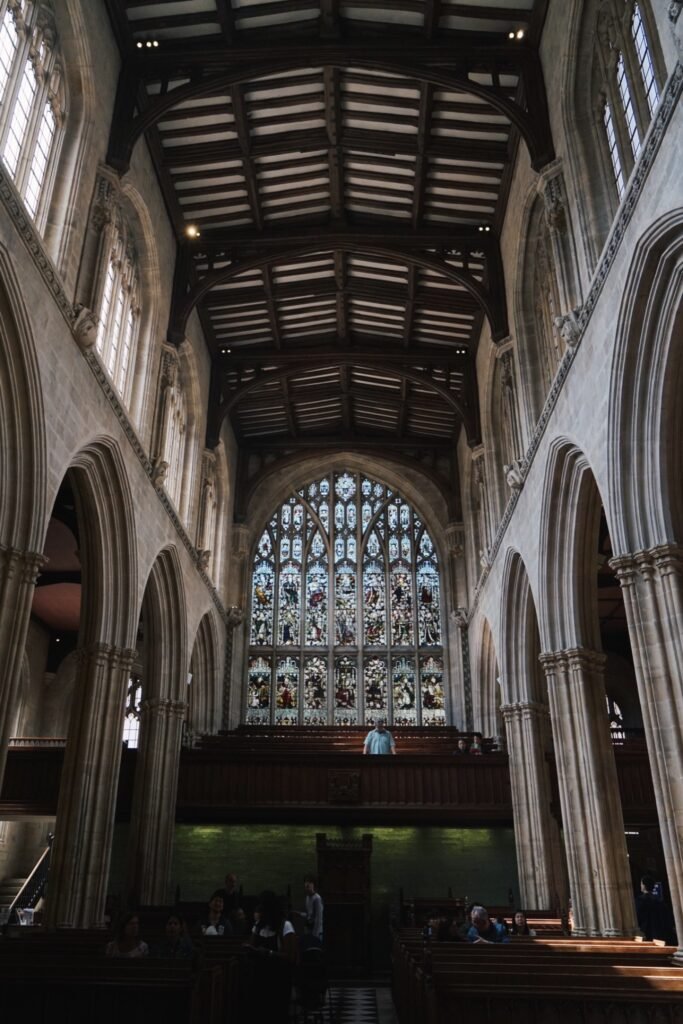

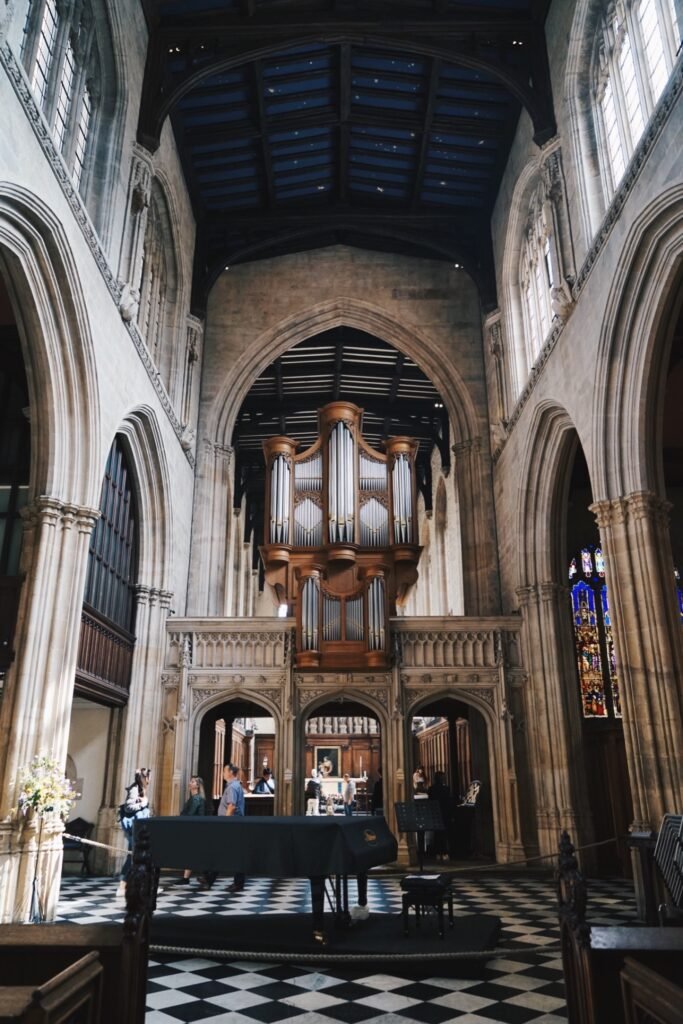
St. Mary’s Church has a relatively simple but very solemn interior. The Baroque-style church portico, built in 1637, features spiral columns that represent a significant innovation in British architectural history.
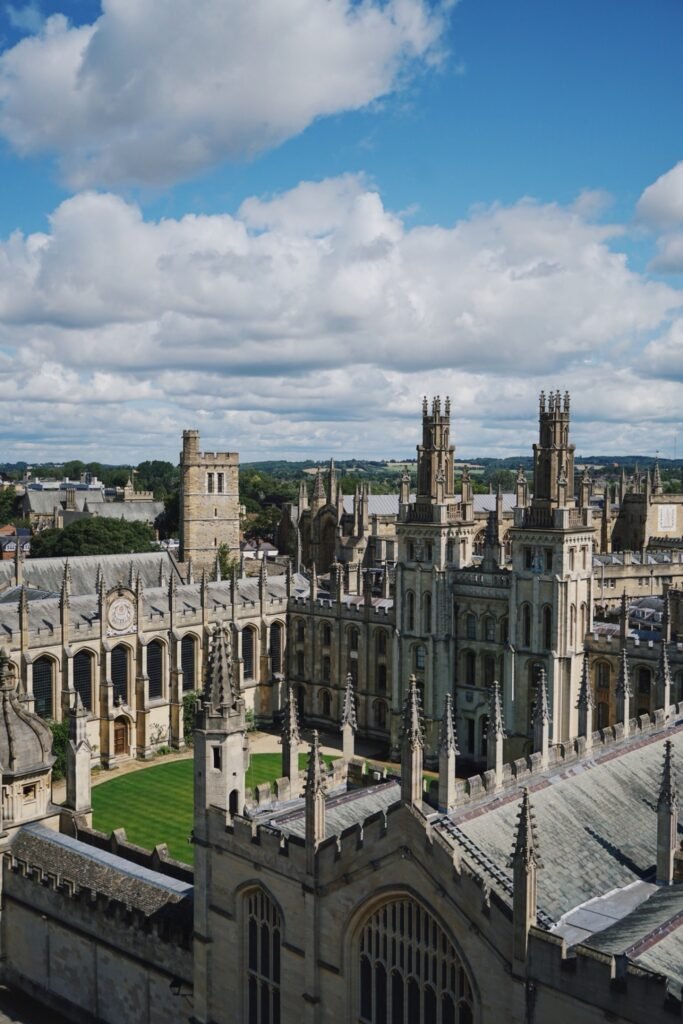

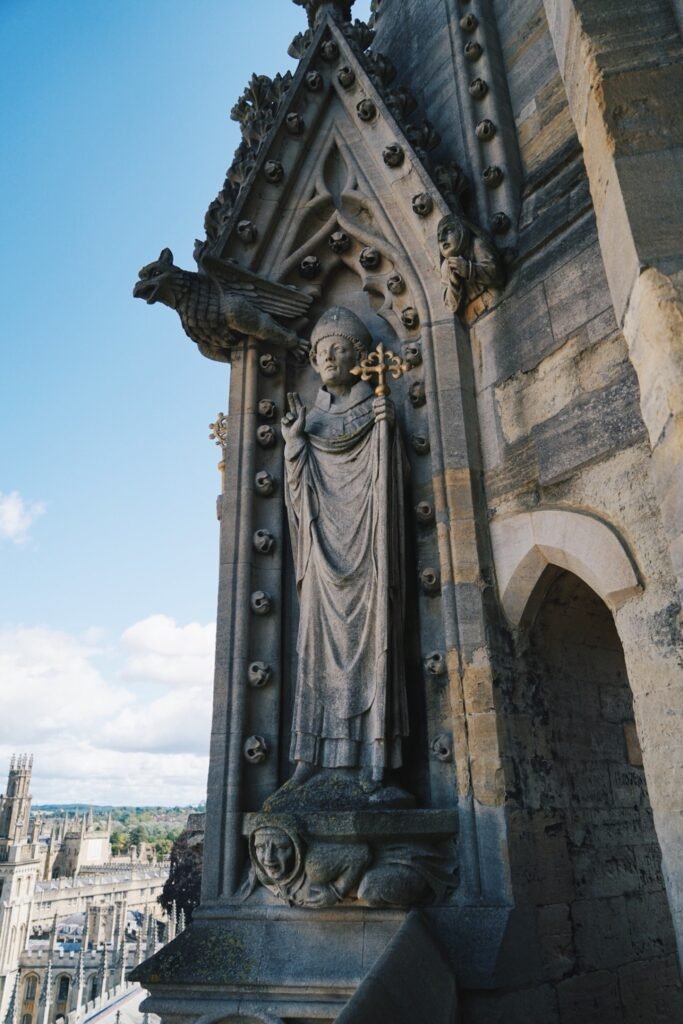
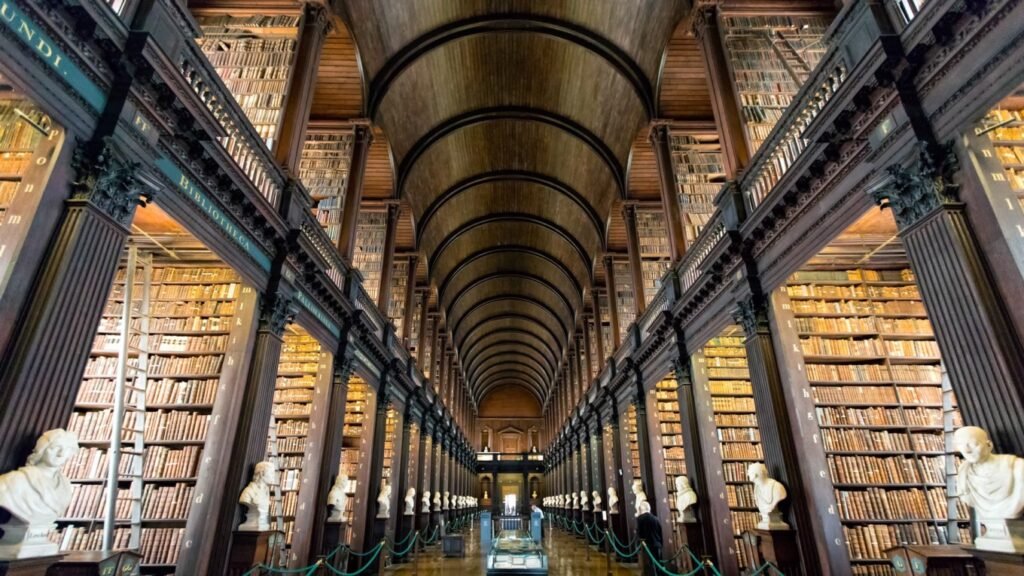
Hertford Bridge, commonly known as the Bridge of Sighs, is a pedestrian bridge in Oxford. It spans New College Lane, linking the north and south sections of Hertford College. Designed by Sir Thomas Graham Jackson, the bridge was completed in 1914. Its distinctive design has made it one of the city’s most recognizable landmarks.
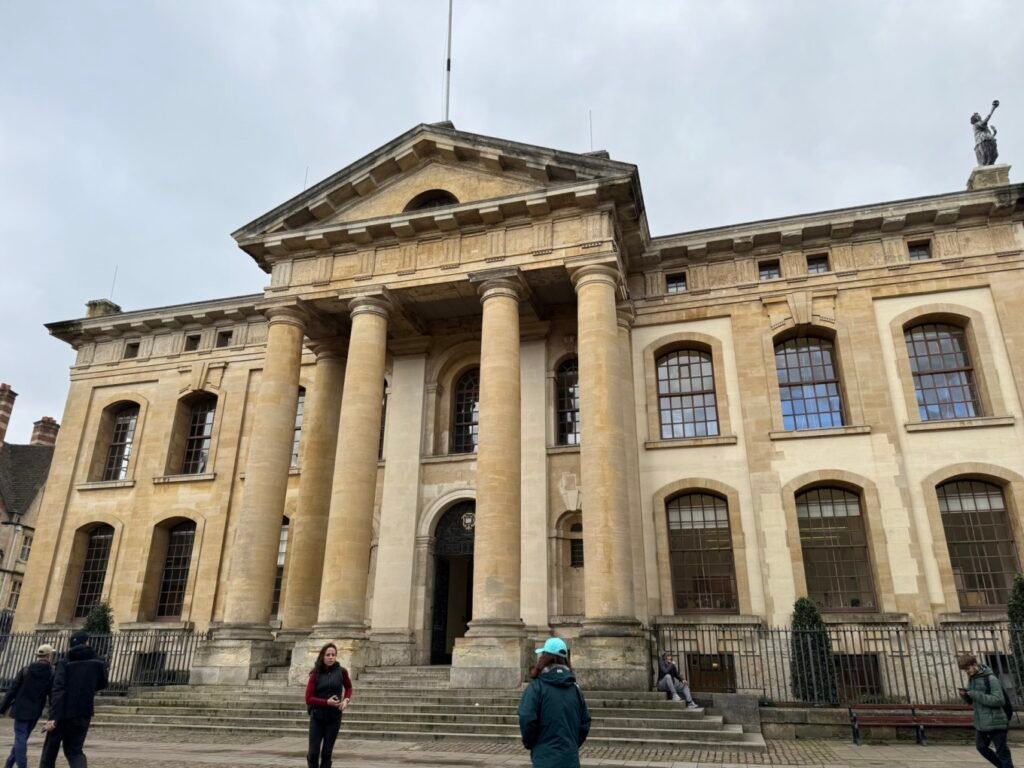
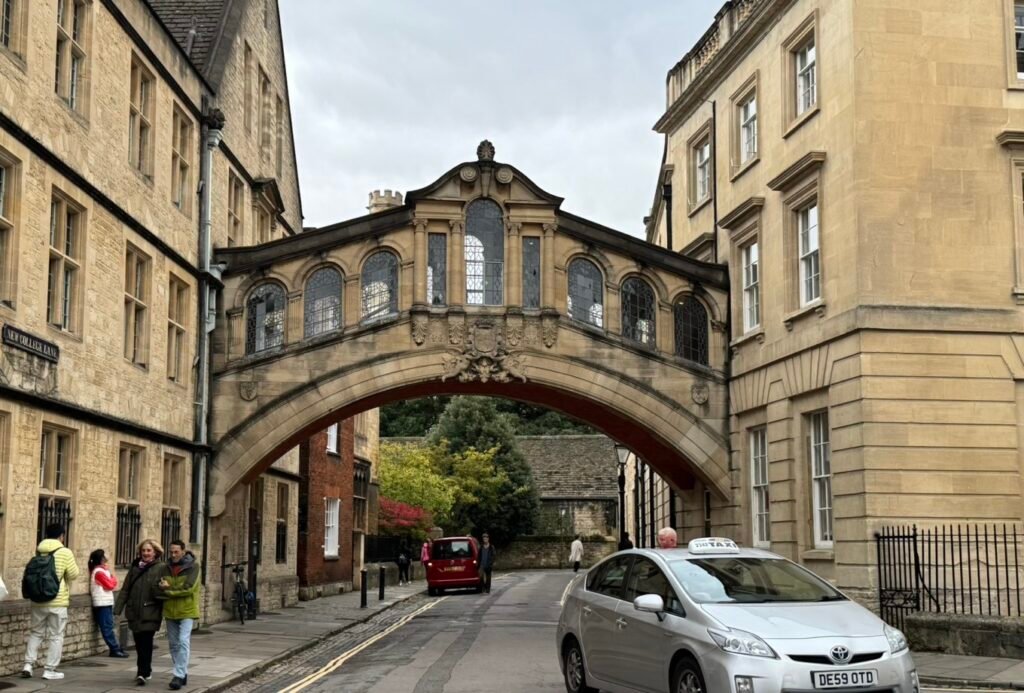
The Bodleian Library, which opened in 1602, is one of the oldest libraries in Europe and the second-largest library in the UK, after the British Library. It serves as the primary library system of the University of Oxford, comprising three main libraries: the Old Bodleian Library, the Radcliffe Camera, and the New Bodleian Library.


Christ Church College in Oxford is the largest of all the colleges within the university. It is one of the few colleges in the world with its own cathedral. The college also gained fame as a filming location for Hogwarts in the Harry Potter movies. One of its proudest achievements is that over the past 200 years, it has produced 13 prime ministers.


This church traces its origins back to 710 AD, when St. Frideswide (650–727) founded a small Saxon priory. Upon her death, her remains were buried in the church, and she became the patron saint of the entire Oxford region. In the 12th century, Augustinian monks undertook extensive reconstruction of the priory, and much of their work has been preserved to this day.
The architecture of the church is a blend of Romanesque and Gothic styles. The nave’s columns and rounded arches reflect the Romanesque, or more precisely, the Norman style that evolved after the Normans brought Romanesque architecture from the European continent to England. Meanwhile, the intricate ribbed vaulting of the ceiling is a hallmark of Gothic design, showcasing the seamless combination of both styles within the same structure.
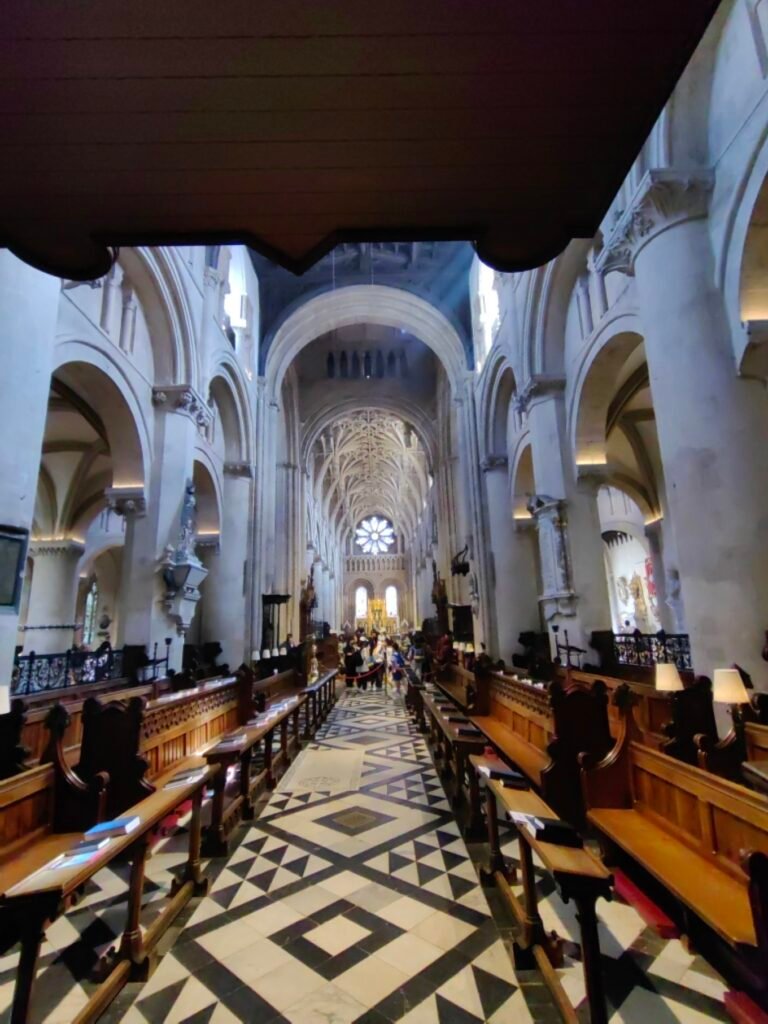
Upon entering through the west gate, to the left is a stained glass window known as the “Jonah Window,” created by the 17th-century German stained glass artist Abraham van Linge. In the lower-left corner of the window, the scene depicts the Jewish prophet Jonah from the Old Testament, sitting beneath a tree. On the right side, the city of Nineveh, the capital of the Assyrian Empire, is illustrated.
On the eastern side of the altar ruins is another stained glass window that portrays the life story of the saint. Notably, this window was designed by the renowned British stained glass artist Edward Burne-Jones (1833–1898). Burne-Jones was only 25 years old when he created this piece, and his artistic style was heavily influenced by Dante Gabriel Rossetti, the founder of the Pre-Raphaelite Brotherhood.

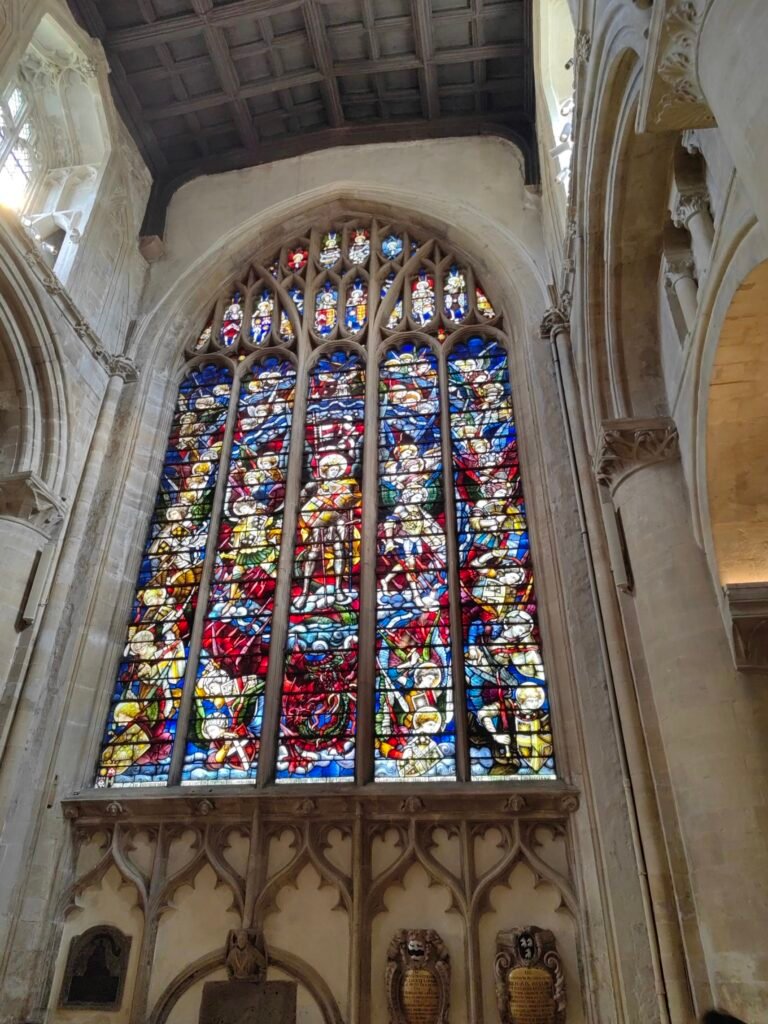
The roof is especially worth admiring. The fan-like ribbed vaults radiate from the sides of twelve domed spires, converging in the center into large octagonal stars. Surrounding these stars are smaller hexagons and quadrangles, creating a dazzling and intricate visual display. The interplay of these geometric patterns gives the ceiling an ornate and grand appearance, evoking a sense of elegance and brilliance.

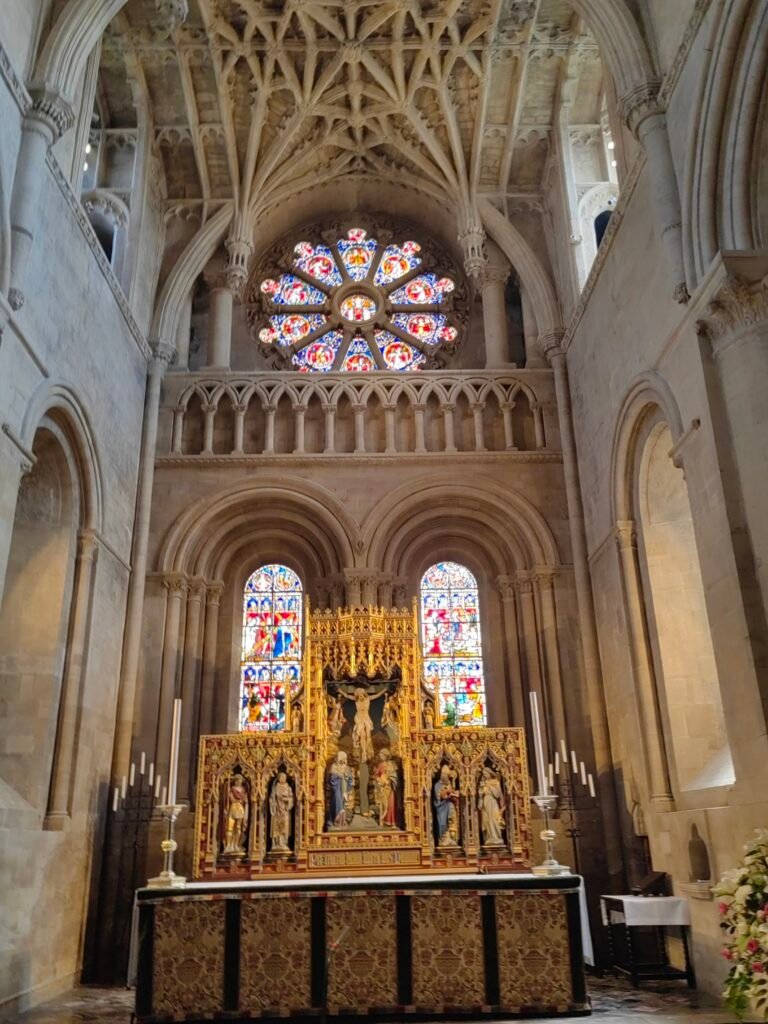
While visiting Oxford, it’s worth making a trip to see the largest private estate in the UK—Blenheim Palace, also known as Churchill’s Estate. Blenheim Palace was built as a ducal residence by order of Queen Anne in recognition of John Churchill, the 1st Duke of Marlborough, for his victory over the French and Bavarian armies in 1704.
The palace holds historical significance as the birthplace of Winston Churchill, one of the greatest British prime ministers. A grandson of the 7th Duke of Marlborough, Churchill inherited the family’s distinguished legacy, demonstrating military brilliance and leading Britain to victory during World War II, securing his place in history.
Many consider Blenheim Palace to rival France’s Palace of Versailles. It is celebrated as a masterpiece of English Baroque architecture, making it a must-see destination for anyone exploring the region.

